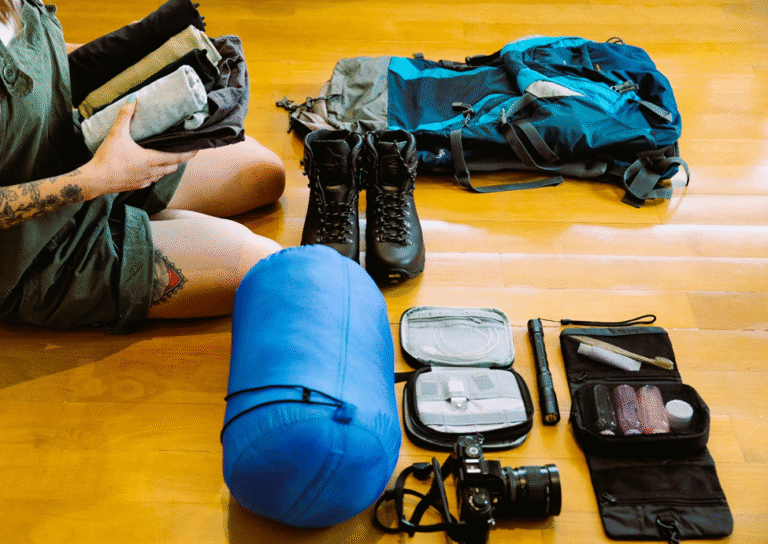
Travelers who travel to high altitudes often suffer from altitude sickness, particularly if they climb fast enough above 8,000 feet. As a result, the body struggles to adjust to fewer oxygen levels, resulting in a range of illnesses. Therefore, preventing serious health problems requires early identification of these symptoms.
Headaches and Dizziness
Headaches are among the first indications of altitude sickness. This headache is usually dull but persistent. It may worsen with physical activity, as the brain is not getting enough oxygen. Dizziness or feeling light-headed often led the headache. You may feel off-balance or even disoriented. These symptoms may seem mild at first, but they can worsen if ignored.
Nausea and Vomiting
Nausea is another common sign of altitude sickness. It might range from slight discomfort to intense nausea. Furthermore, if the patient’s condition worsens, they may vomit. Additionally, altitude sickness naturally causes people to lose their appetite and feel unable to eat. Consequently, these symptoms might cause dehydration, which can worsen the disease. Therefore, staying hydrated is critical at high altitudes to reduce the effects of these illnesses.
Fatigue and Weakness
Altitude sickness can zap your energy quickly. Even if you slept well, you can feel unusually tired or weak. Simple tasks such as walking or moving a suitcase can be tiring. Fatigue arises at higher elevations because your body has to work harder to obtain enough oxygen. This illness can deteriorate quickly, so take frequent pauses and avoid overexertion.
Shortness of Breath
Breathlessness is a common complaint at high altitudes. Even with minimal physical exertion, you may feel out of breath. Shortness of breath happens because the body isn’t receiving enough oxygen. This symptom is particularly noticeable when climbing or performing activities that require energy. If breathing becomes extremely difficult, it’s essential to descend to a lower altitude immediately.
Difficulty Sleeping
High altitude circumstances might disrupt typical sleep patterns. Many people have insomnia or restless sleep while adjusting to the altitude. You may wake up frequently, unable to get into deep sleep. Some people may also have sleep apnea, a condition in which breathing ceases and returns intermittently throughout sleep. Lack of sleep can worsen other symptoms, leading to greater fatigue and frustration.
Swelling of Hands, Feet, or Face
Swelling, also known as “peripheral edema,” can develop in the hands, feet, or face. This swelling is typically minor yet evident. It occurs when fluid collects in the tissues due to low oxygen levels. Swelling isn’t necessarily dangerous, but it can indicate that your body is straining to adjust. If you feel swelling, you should prevent further climb until the symptoms improve.
Confusion and Difficulty Thinking
Higher elevations may cause confusion or “brain fog.” This symptom impairs cognitive function and decision-making. Simple chores may appear complicated or complex. Altitude sickness can decrease cognitive abilities, making it dangerous to ignore. If you or anyone in your group feels especially disoriented, seek assistance and consider descending right away.
Loss of Coordination
Altitude sickness can damage muscle coordination, resulting in awkwardness. Walking or lifting up objects can seem difficult. This is due to decreased oxygen delivery to the brain and muscles. Poor coordination is a common pointer of worsening altitude sickness. Down to a lower altitude can often help restore coordination.
Rapid Heart Rate
High elevations are associated with a faster-than-normal heart rate. The heart works harder to provide oxygen to your muscles and organs. Even when you are resting, you may feel your heart racing or throbbing. If you have this, avoid further physical activity until the symptoms improve.
Cyanosis (Bluish Lips or Fingertips)
Cyanosis is a severe sign of altitude sickness. It’s a bluish tint on the lips or fingertips, indicating low oxygen in the blood. Cyanosis requires immediate medical attention. If you or someone in your group shows signs of cyanosis, descend to a lower altitude urgently. Oxygen remedy may also be essential to stabilize the individual.
What to Do if You Notice These Signs
If you suffer any of these symptoms, you must take action. Here are some quick approaches to help with altitude sickness:
1. Rest frequently to allow your body to adjust. Avoid pushing yourself.
2. Stay hydrated to avoid dehydration.
3. Quickly descend to a lower elevation if your condition worsens.
4. Professional medical attention, such as oxygen or advanced treatment, may be required in severe situations.
5. Avoid alcohol and tobacco use, as these might worsen the symptoms.
6. Acetazolamide may be prescribed by a physician to decrease the symptoms of altitude sickness.
Preventing Altitude Sickness
Preventing altitude sickness is easier than treating it. Be sure to allow time for gradual adjustment when planning your trip. Slowly ascend with the goal of sleeping at a lower elevation. For the first several days at high altitude, stay away from physically demanding activities. The incidence of symptoms can also be reduced by eating a well-balanced meal and drinking enough of water.
Altitude sickness can affect people of any fitness level. Serious health problems can be avoided by detecting symptoms early. If you exercise caution and remain vigilant, you can safely appreciate the splendor of heights. If symptoms continue, descending to a lower altitude is often the best course of action.
FAQ’s
What are the common symptoms of altitude sickness?
How quickly do altitude sickness symptoms appear?
Is shortness of breath a sign of altitude sickness?
Can altitude sickness cause confusion or disorientation?
What should I do if I experience altitude sickness symptoms?






